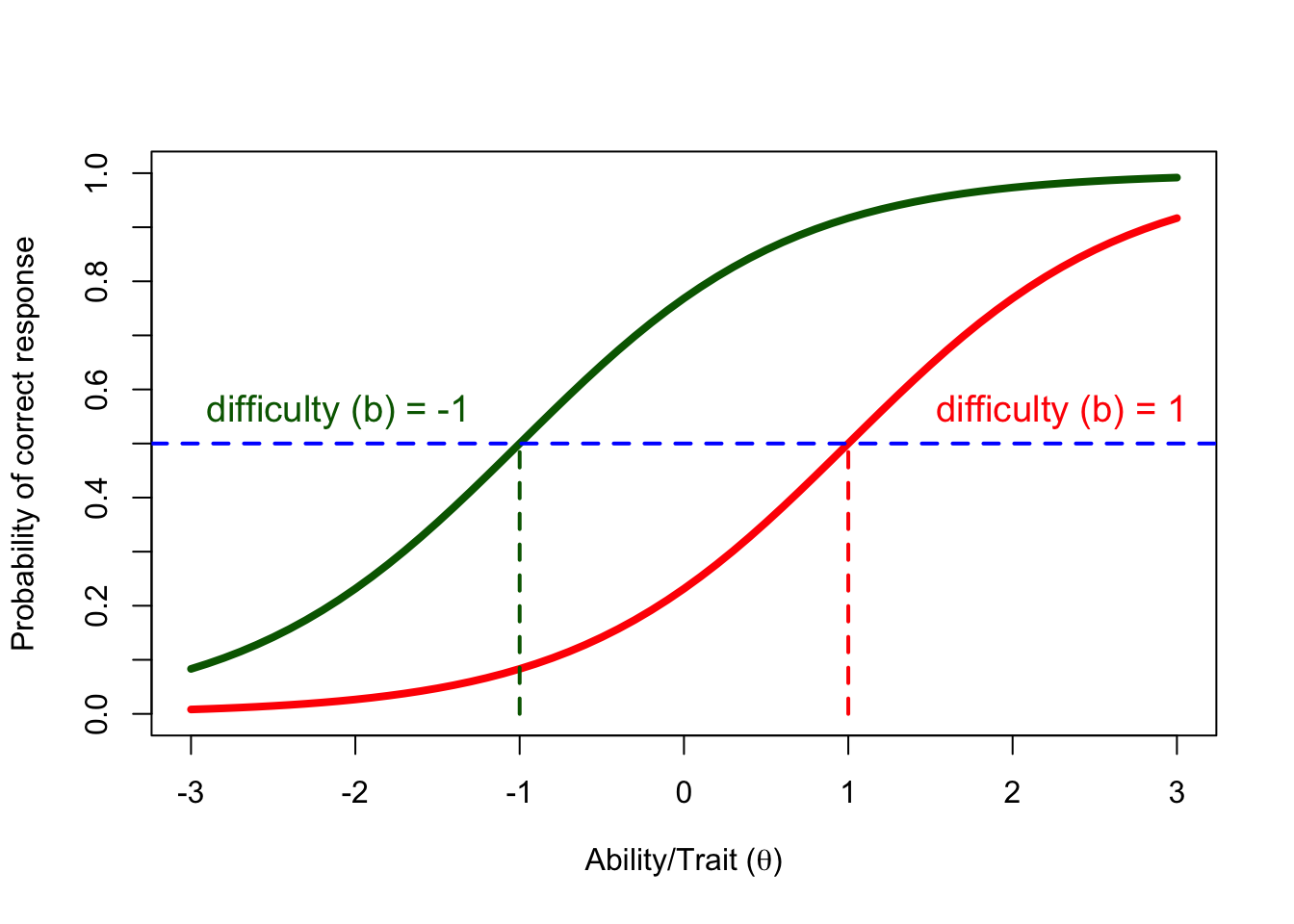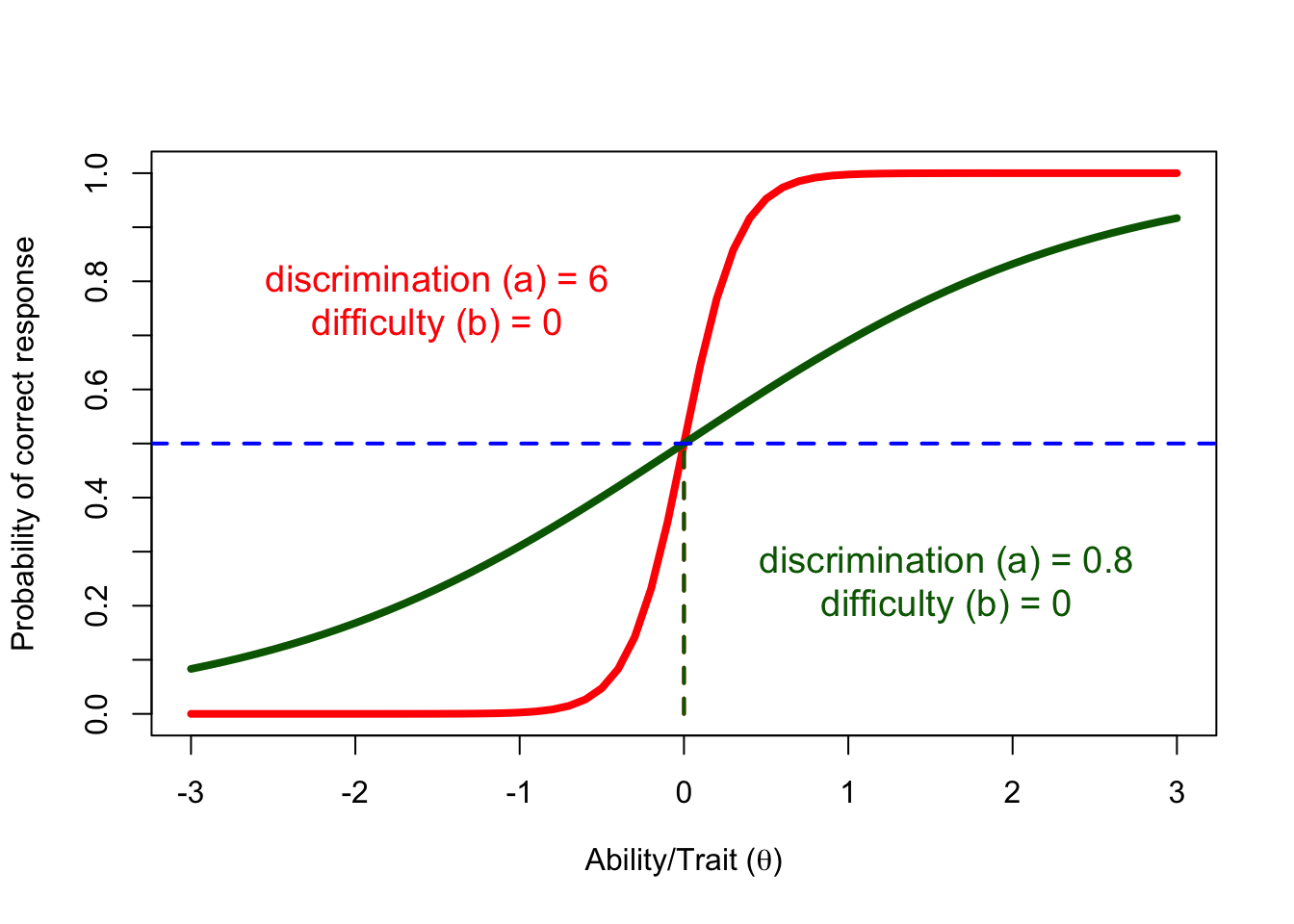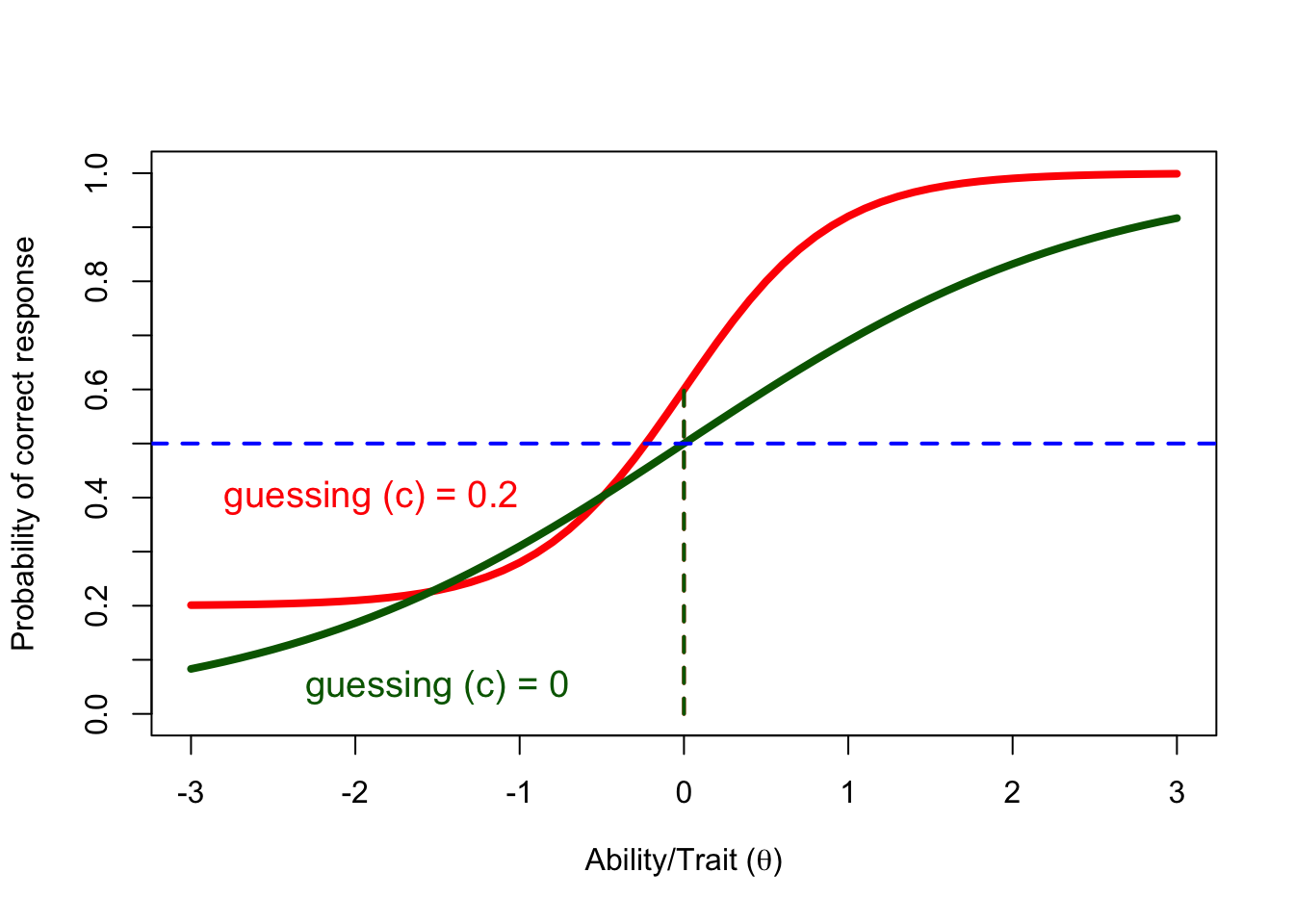15.4 Parameters
The most common parameters used in logistic models are item difficulty (\(b_{j}\)), discrimination (\(a_{j}\)), and guessing (\(c_{j}\)).
In addition to the values estimated for every parameter, IRT models allow us to graphically inspect these parameters using the Item Characteristic Curve (ICC). ICC plots place the location of respondents' level of ability/trait in the x-axis and the probability of endorsing the item in the y-axis.
15.4.1 Item difficulty (\(b_{j}\))
Item difficulty (\(b_{j}\)) shows the location of the item along the continuum of ability/trait (\(\theta_{i}\)). Thus, \(b_{j}\) allows us to estimate the difficulty of every item. Items endorsed or correctly answered with a probability of 0.50 corresponding to high values of \(\theta_{i}\) should be considered difficult items. In other words, an endorsement of 50% in a given item requiring high levels of ability means that the item is very difficult.

15.4.2 Item discrimination (\(a_{j}\))
Item discrimination (\(a_{j}\)) refers to the ability of an item to discriminate (i.e., differentiate) among respondents with different levels of ability/trait (\(\theta_{i}\)). Consequently, items with larger discrimination values (e.g., \(a_{j} = 6\)) show larger slopes.
In all 1 Parameter IRT models, \(a_{j}\) is fixed for all items. Thus, the discrimination parameter is set to 1 in the 1P Rasch model, whereas it is estimated from the data in the 1PLM.

